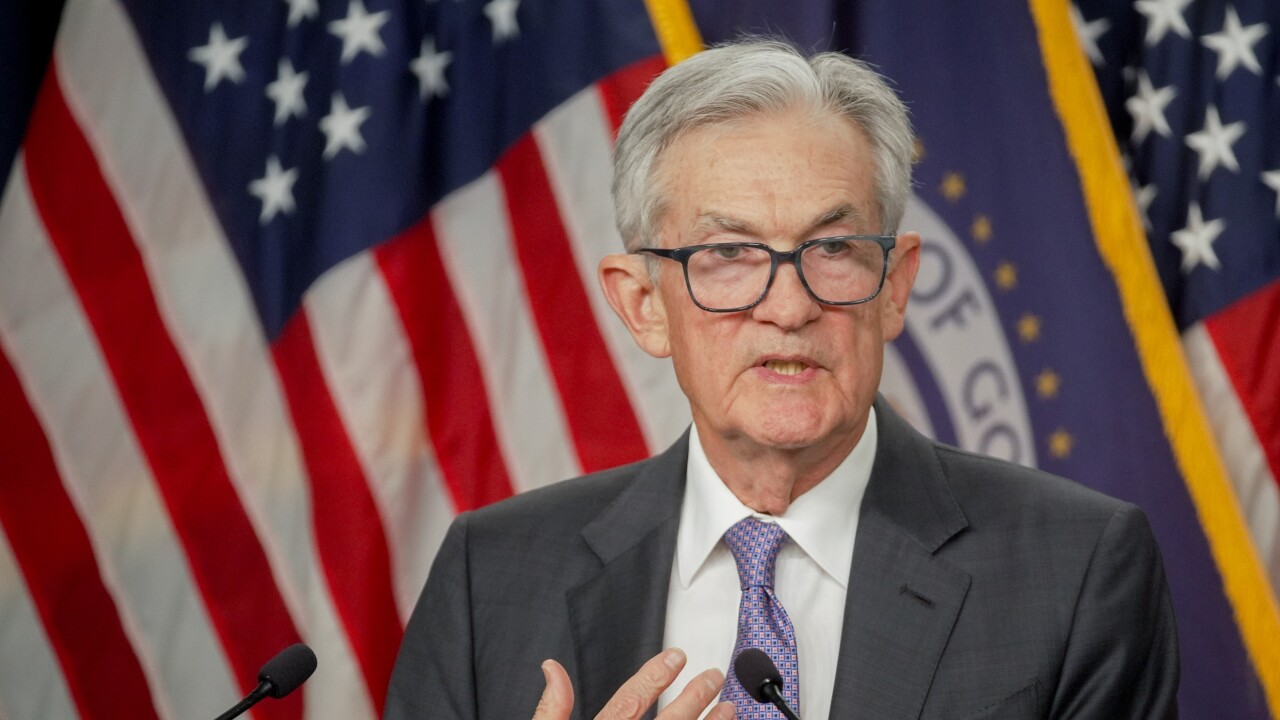U.S. credit card balances topped $1 trillion for the first time in history last quarter, as strong consumer spending pushed borrowing to a new record, according to the Federal Reserve Bank of New York.
And while more borrowers fell behind on their card payments compared with last year, the increase in delinquencies appears to have stabilized in recent months, driven by significant improvements among subprime borrowers.
The New York Fed's findings are consistent with

"On the whole, I'd say consumers are in reasonably good shape," Capital One Financial CEO Richard Fairbank told analysts last month, adding that the McLean, Virginia-based bank thinks it's a "good time to keep leaning in."
The big surprise this year is "how resilient the consumer has been," said Brian Doubles, CEO of the credit card issuer Synchrony Financial. He pointed to continued gains in the job market as a major factor keeping households healthy.
"Everything we're seeing on the consumer is still pretty positive," Doubles said. "With that said, we're still operating cautiously."
Card balances reached $1.03 trillion during the second quarter, up 16.2% from a year earlier, the New York Fed found in its quarterly report on household debt.
Overall, household debt stood at $17.06 trillion during the quarter, up by roughly $900 billion from a year earlier. Credit card, auto debt and mortgages drove much of the increase, with mortgage debt having slowed since the start of the year.
More borrowers were late on their card payments compared with the last few years, as the larger savings buffers that U.S. consumers accumulated during the pandemic have eroded.
Subprime borrowers have been far more likely than others to see trouble, but the New York Fed report indicated those pressures have eased somewhat.
The rate of subprime cardholders that slipped into delinquency stood at 5.54% last quarter, up from nearly 3% in 2021, but down from a 6.23% delinquency rate in the first quarter.
Delinquency trends among near-prime borrowers — those with credit scores between 620 and 659 — also improved from the first quarter. Prime and super-prime borrowers didn't show much movement, with their delinquency rates remaining around 1% or lower.
"Even as inflation has lingered and interest rates have risen, pushing card debt to record levels, Americans have generally done a good job paying their credit card bills on time," Matt Schulz, chief credit analyst at LendingTree, said in written commentary.
But Schulz cautioned that the situation could deteriorate when the pandemic-era moratorium on federal student loan payments ends in October.
"The resumption of student loan payments will be a huge test for many cardholders, shrinking the amount they have to devote to paying off card debt and leaving some people simply unable to make minimum payments at all," he said.
The New York Fed's researchers said recent policy changes from the Biden administration should help ease the transition. Those actions include lowering the monthly student loan payments required from borrowers on income-driven repayment plans and a 12-month "on-ramp" period, during which financially vulnerable borrowers who miss payments will temporarily not be reported to credit bureaus.
Credit card lenders have said they're monitoring their portfolios for any potential troubles as a result of the end of the payment moratorium.
"I don't think it's going to have a large impact, but it's something we actively will monitor," Bread Financial Chief Financial Officer Perry Beberman said last month.
Bread, which offers store-branded cards in partnership with retailers, can easily see whether cardholders have a student loan and monitor their performance, Beberman said.
Less than a quarter of Bread's borrowers have a student loan outstanding, and the Biden administration's recent moves to aid such borrowers should limit stress, he said.
The New York Fed report uses data from the credit bureau Equifax.






